Geographical Problems: Interview with Artist Justin Levesque
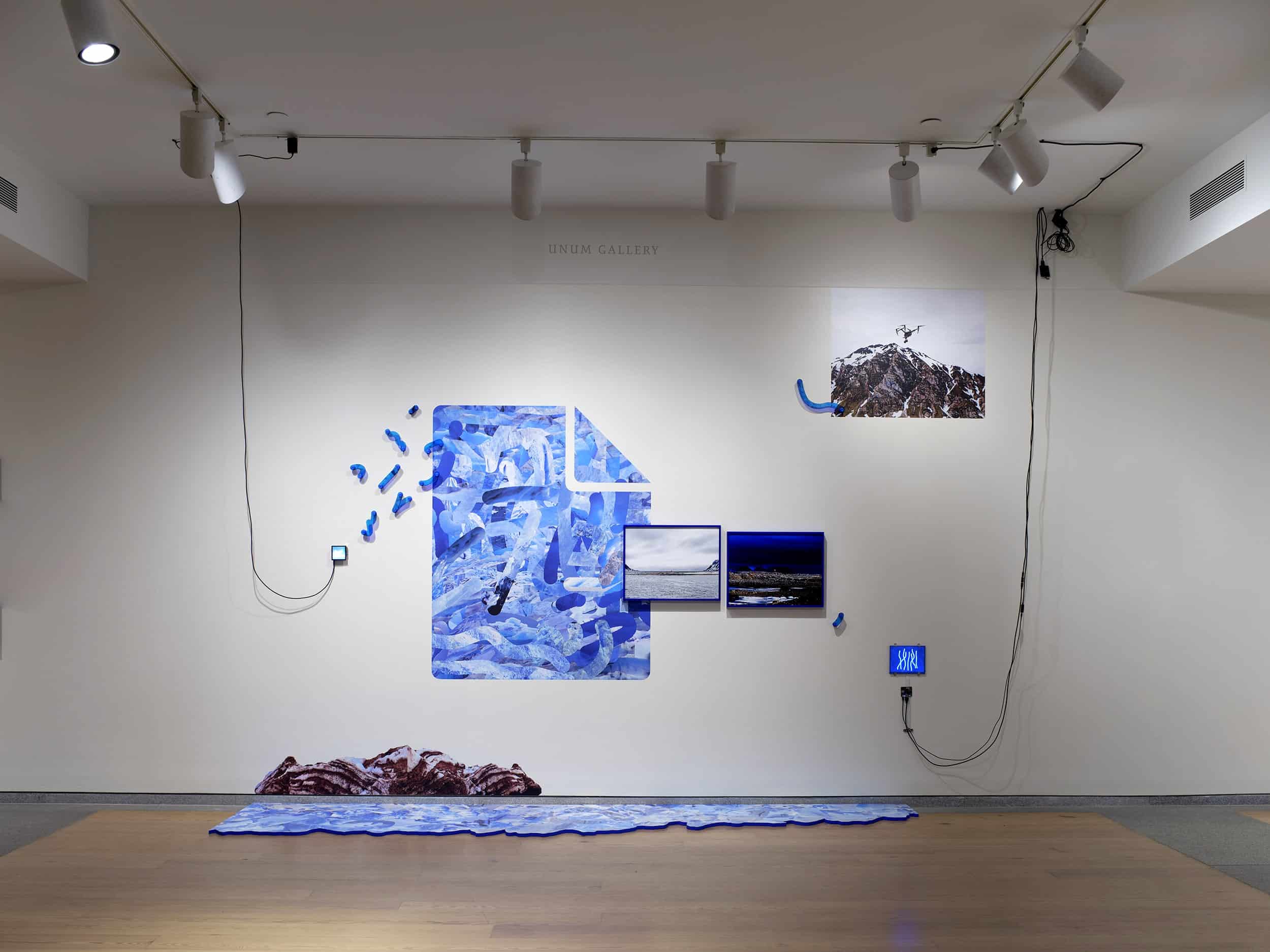
Justin Levesque (United States, born 1986), Geographical Problems (your files are too powerful), 2021, Phototex, vinyl, photographs, acrylic, PLA, LCD, and PVC, 175 x 120 x 36 inches. Courtesy of Justin Levesque. Photo: Luc Demers
The Arctic Institute Queering the Arctic Series 2023
- The Arctic Institute’s Queering the Arctic Series 2023: Introduction
- Mapping the Landscape of LGBTQ+ Hope Spots: An Arctic Equality Map
- Tromsø as a “Safe Space”: LGBTQ+ Inclusivity through Arts in the Arctic Gateway
- Geographical Problems: Interview with Artist Justin Levesque
- Northern Identities: Rereading Woman of Labrador
- The Arctic Institute’s Queering the Arctic Series 2023: Conclusion
The world’s most northern regions are emerging as more important than ever before. Areas previously seen as peripheral are leading a societal transformation that will shape our common future. Organized by the Portland Museum of Art in Maine (USA), Reykjavik Art Museum (Iceland), and Bildmuseet (Sweden), the exhibition Down North: Contemporary Art from the Arctic presents works by thirty contemporary artists from Canada, Denmark, Finland, the Faroe Islands, Greenland, Iceland, Norway, Sweden, and the United States, as well as from Sápmi and other Indigenous nations in the Arctic regions. They explore the critical issues of our time and use art as a catalyst for change.
Today’s climate and environmental changes and a problematic colonial history have inspired works of art that address social, economic, political, and ecological challenges throughout the region. Other works confront the illusion of the North as remote wilderness and challenge the romanticized notion of untouched land and its perceived homogeneity.
The exhibition traces shared experiences within the region through a wide range of works of art in different media, reflecting novel affinities and chasms within societies and among nations in the North Atlantic.
Portland-based interdisciplinary artist Justin Levesque is one of the thirty participating artists in Down North. He considers the materiality and tradition of photography in relation to information exchange and mediated geographies of the High North. His work is informed by seaborne artist residencies, including Eimskip and The Arctic Circle in Svalbard, as well as social media, historic photographs, and literature. To Levesque, the polar region is commercialized, mass produced, and over consumed in the digital sphere, where false narratives and mythologies celebrate its earliest explorers, commonly framed as masculine heroes. Instead, Levesque employs a medial process to reimagine the Arctic from a disabled queer body in the 21st century.
When The Arctic Institute released a call for proposals, one of Down North’s curators, Jaime DeSimone, contacted Levesque about his installation, Geographical Problems. DeSimone, whose curatorial practice is commitment to centering the artist’s voice, proposed an interview for Levesque for two reasons: 1) to hear directly from the artist about his explorations in the Arctic in the twenty-first century and 2) how an interview as a format can “queer” the Arctic Institute’s proposal and best adhere to their call.
Jaime DeSimone [JDS]: Would you describe for readers the new work, Geographical Problems, that you created for the exhibition Down North?
Justin Levesque [JL]: Geographical Problems presents a dioramic possibility of the Arctic, where my interest in mediated geographies is visible. Mediated geographies refer broadly to culturally produced material (such as images, poetry, etc.) that are used to negotiate some aspect of the public’s epistemological understanding or experience of a place. The concept of synthetic and constructed images is at the core of this work. I use a generative adversarial network (GAN), an algorithmic architecture, to generate the artificial images found in the video component. I also sample photographs of tourist destinations from the public domain. This approach reconsiders perpetuated stories, images, and travelogues, often found in National Geographic and The Explorer’s Club, where subscribers read about the Arctic and new photographic technologies. Through digital mapping of the Arctic, I assume the role of virtual explorer to challenge the historic polar explorer’s imperial gaze and ‘queer’ the contemporary landscape.
JDS: Your work sits in a liminal space between virtuality and reality. You assume the role of a virtual explorer, it’s true, but – and this is because I know you – your work is also the result of your own physical explorations. Shall we back up a little and share your actual experiences as an explorer in the Arctic?
JL: That’s interesting. As soon as you asked me to connect my physical experience of going to the Arctic to the word explorer, I suddenly felt claustrophobic and wanted to reject the title entirely. Maybe like before, it just needs a modifier, whereas with my research in books or online, I become a virtual explorer, in actually going to these places, I am, or at least was initially, wearing the disguise of an explorer. Anyway, I’m sure we’ll get deeper into that later.
I first learned in 2015 that the Icelandic shipping company, Eimskip, relocated their North American headquarters from Norfolk, Virginia to Portland, Maine. Maine has since continued to use this emerging relationship to Iceland to ease its gaze further and further North hopeful that new opportunities for economic growth might become available with the continued melting of Arctic ice. In response, I created a nine-day independent artist residency aboard an Eimskip container ship and sailed from Portland, Maine to Reykjavík on their Green Line shipping route.
I came out of that residency wondering, how do initiatives for the economic development of Maine reconcile and/or ignore Arctic issues while simultaneously leveraging changes in climate? I then participated in The Arctic Circle artist residency sailing around the high-Arctic Svalbard Archipelago and Arctic Ocean aboard a tall ship in 2017. To crudely sum it up, the container ship was all human labor and industry while the tall ship, basically its inverse, was cosplay and nature.
And as for the actual experiences themselves, navigating on the one hand the intricacies of my queer identity and then on the other hand, deciding whether or not to disclose my disability (a bleeding disorder, hemophilia A) ended up becoming the framework for how I ended up understanding my time spent there. For example, in the confined space of the container ship, where heteronormative masculine roles and norms are amplified, it was necessary to balance the tension of ensuring my personal safety in the unfamiliar setting and wanting to develop meaningful relationships.
The decision to share information about my bleeding disorder with others also comes from a need to balance my safety and relationships but it’s also accompanied by concerns of being perceived through physical limitations rather than my capabilities and often empowers others to decide on my behalf what is accessible. Especially with the artist residency in Svalbard, on an expedition that remote, I more or less knew that if I disclosed my diagnosis prior to embarkation, I wouldn’t be allowed to participate, so I didn’t. I guess you could say, out of one closet and into the other. Oh, that makes sense, perhaps more of a stowaway than explorer at some points along the way.
JDS: Stowaway, ha! Definitely, not. You’re an active participant; that’s my role to remind you. How have your own journeys in the Arctic reversed the heroic myths about polar explorers?
JL: At its most basic level, simply choosing to participate (by any means necessary) in Arctic expeditions as a queer and disabled individual is a unique vantage point from which to challenge and redefine the prevailing heroic myths of polar exploration. The Arctic landscape is both perilous and precarious and becomes a backdrop, or maybe even a kind of mirrored reflection, where those same shared traits found in disabled bodies can be visualized. While it’s true that the environment poses challenges to anyone, my experience underscores the interplay between adaptability, resourcefulness, and resilience that transcends conventional notions of heroism. By navigating the Arctic landscape with this disabled, queer, body, my body, I contribute to a broader narrative that underscores the multidimensionality of heroism, breaking away from the traditional masculine-centric and able-bodied ideals.
In that context, it’s fascinating to consider how the entrenched concept of male heroics has historically revolved around displays of physical prowess and the conquering of land, often sidelining other forms of strength. The Arctic environment magnifies this dynamic, revealing the limitations of such myopic definitions. As a queer and disabled “explorer,” I’m dismantling this framework by embracing qualities that have been sidelined: creativity, adaptability, and a capacity to navigate the environment with unconventional solutions. By challenging the notion that heroism must align with specific performances of patriarchy or able-bodiedness, I’m offering a reevaluation of the exploration narrative.
And I guess, further, the very nature of my presence itself within the Arctic landscape challenges preconceived notions of what it means to be a so-called explorer and seeks to redefine adventure as an open-ended endeavor that extends beyond the physical realm. The landscape becomes a canvas upon which the intersection of queerness and disability takes center stage, challenging traditional dichotomies of strength and vulnerability.
JDS: You control this 21st-century narrative. You’re its heroic protagonist through alternative images. Let’s discuss the notion of “queering” the Arctic. Shall we start with your definition of it so all readers are operating from the same space?
JL: I view “queering” as a methodology that refers to a transformative process that challenges established norms, binaries, and hierarchies within cultural symbols, discourses, and systems. Language, symbols, and societal structures are not fixed or objective, but are instead socially constructed and imbued with power dynamics. So, to “queer” a text, image, or concept is to deconstruct its assumed meanings, revealing the hidden assumptions that underlie them. For me it’s a way of working that highlights the fluidity of what is being signified while questioning the stability of traditional identities and categories, subverting hetero/cis/able-bodied normative paradigms.
JDS: Queering as a verb, an action. What does that mean to you as an artist? As an artist in the Arctic?
JL: As an artist, queering is to invite critical engagement with identity, desire, and representation. Thinking of the Arctic, queering is to provoke conversations that transcend traditional boundaries, fostering a space for marginalized voices and experiences to be heard. It’s the creation of worlds previously unseen. Queering is also pointing at a thing and calling it out, sometimes calling it in. It’s to be embodied – to communicate through presence.
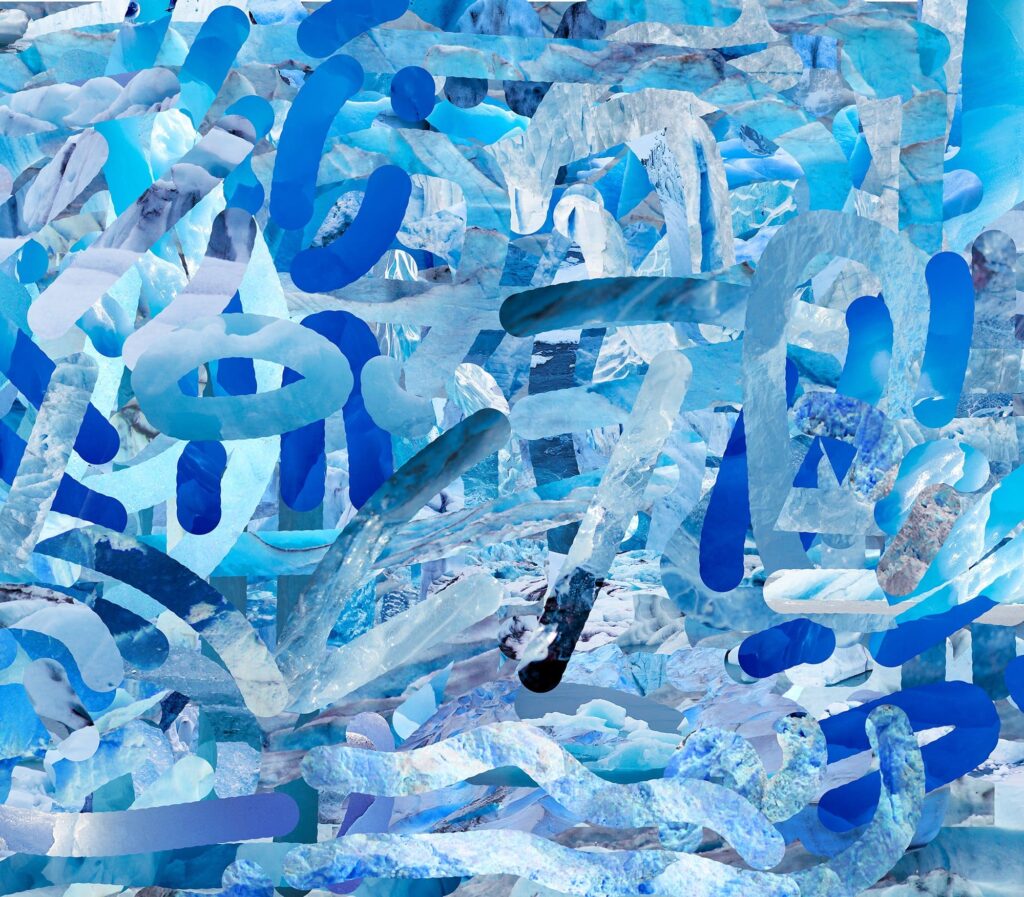
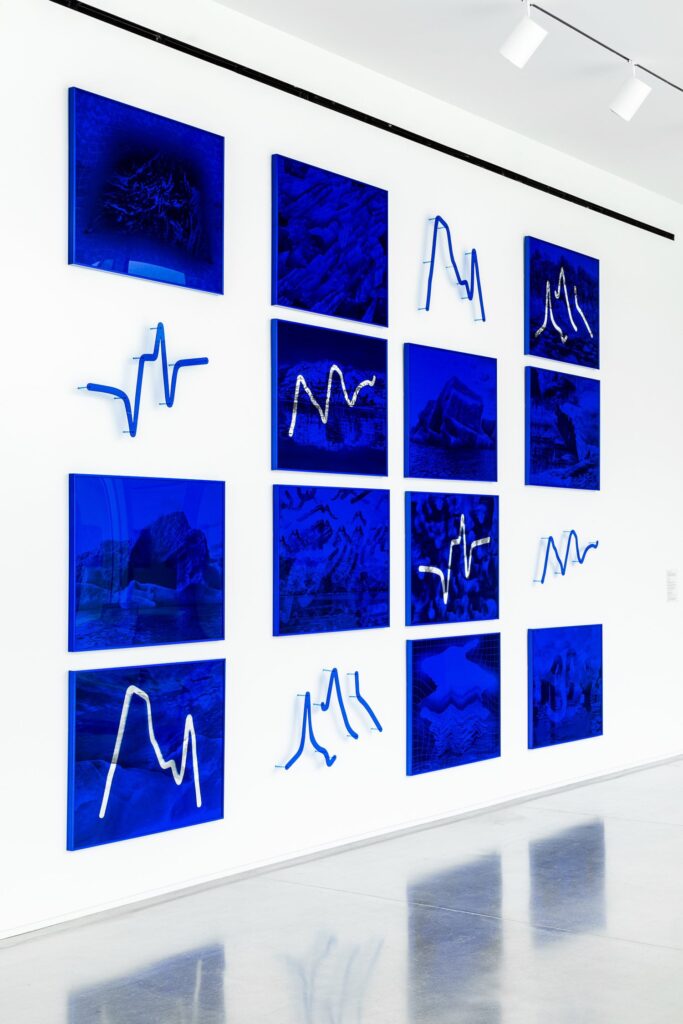
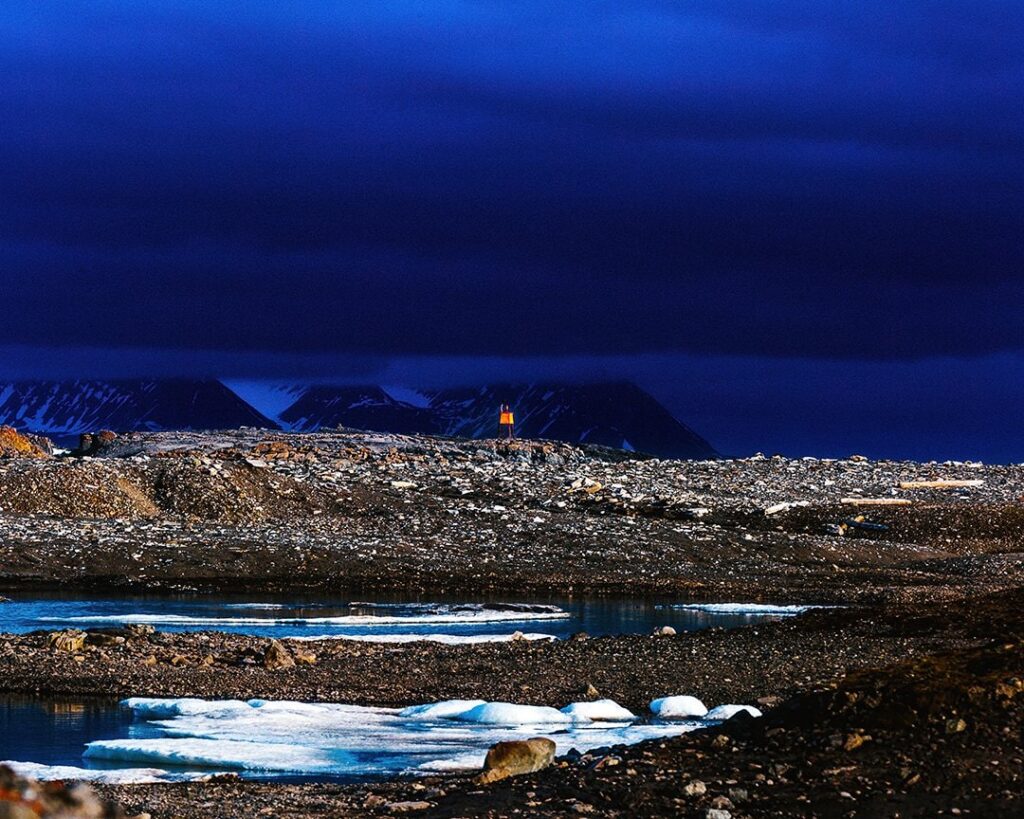
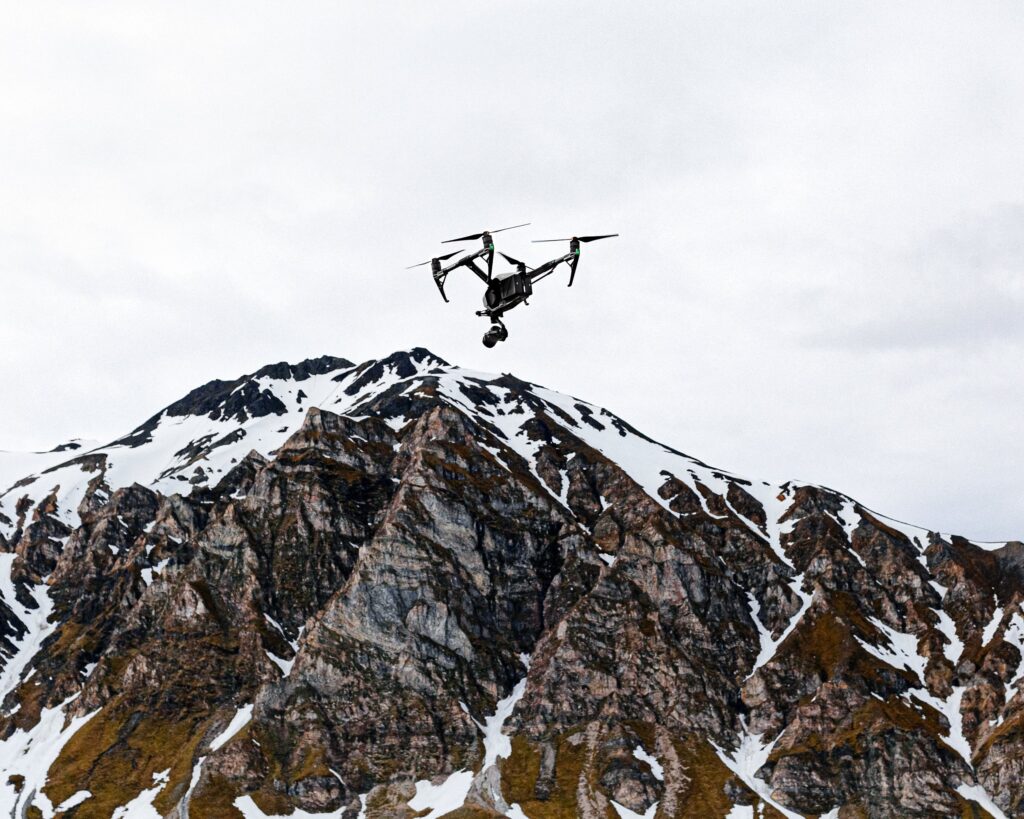
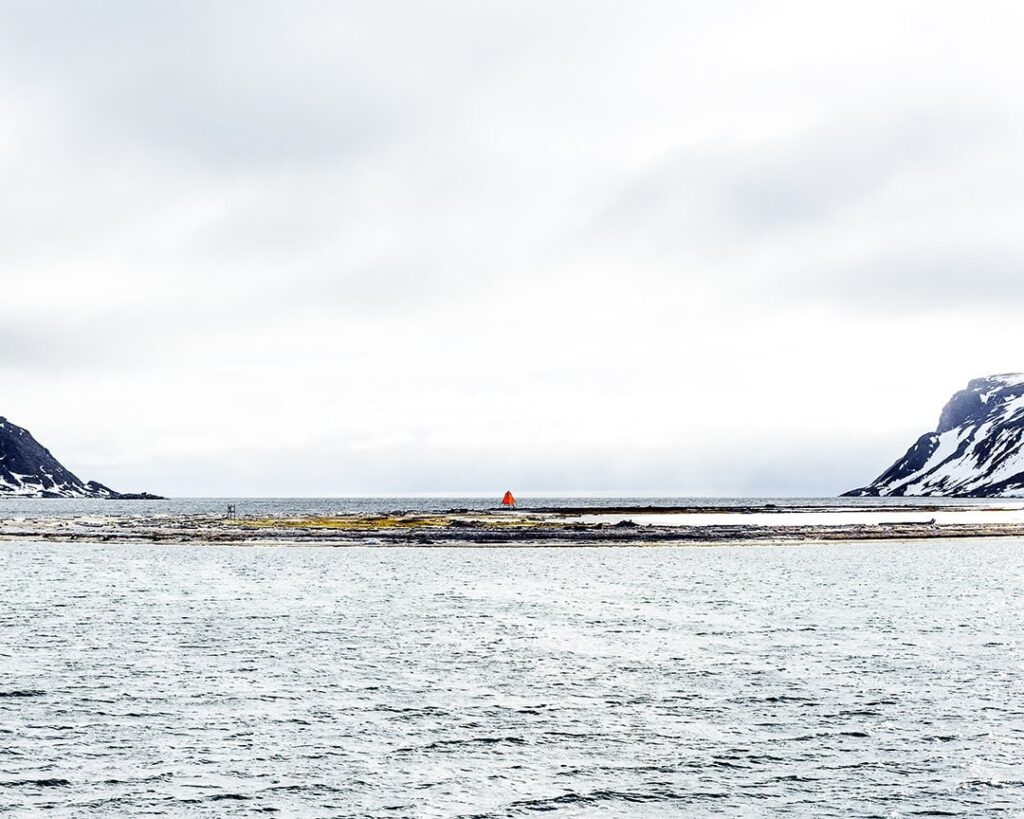
JDS: Your artist statement includes powerful language on this topic. If it’s okay with you, I’d like to recite:
“To queer the contemporary reperformance of colonial image-making, I appropriate blue photos of blue places to produce speculative objects. Within these conditions, I critique the historic polar explorer’s imperial gaze and undermine their self-constructed legacies.”
I recognize these actions and strategies in Geographical Problems. Would you like to comment on the “historic polar explorer’s imperial gaze” as it relates to queerness in the Arctic?
JL: The imperial gaze has historically depicted the Arctic as an untouched frontier, ripe for conquest and exploitation. When we allow queerness to enter the narrative, it disrupts the colonial paradigms that have long dominated (and continue to still) Arctic discourse. Its presence offers an alternative viewpoint that resists the objectification and exploitation of both the land and its indigenous inhabitants. In this way, queerness in the Arctic becomes an act of subversion, redefining exploration as an inclusive, respectful engagement that acknowledges and honors the multifaceted narratives of the region and its people.
Today, we can quite easily see how the historic polar explorer’s imperial gaze is actually being reperformed by predominantly white, male, straight, able-bodied photographers whose own heroes lined the pages of National Geographic. They’ve traded celestial navigation tools for long lenses and ships for UAVs. Their pursuit of conquest and conquering now comes in the form of the digital image that is captured and instantaneously exchanged for social currency online. The same tropes of yesterday are fueled by new technologies like the internet, 1 terabyte SD cards, and GoPro’s. It’s almost as if the length of one’s telephoto lens is directly representational to the projection of one’s phallus swinging in the air pissing on the land to claim it. One of the most popular outcomes of these exploits is image after image of blue ice–glaciers calving, lonely icebergs, and so-called diamond beaches. Meanwhile, this ice is the very material most under threat from climate change, extremely important to indigenous ways of living, and yet, guaranteed to bring high levels of engagement on Instagram – ”Please remember to like, comment, and share!”
JDS: You also utilize the color blue. As someone familiar with your work, I recognize a new, bold direction in Geographical Problems about the ongoing commercialization of the polar region. How is it an accumulation of previous works?
JL: The internet is blue. From hyperlinks on hardcoded web pages to more than 30 percent of all corporate logos circulating online, blue defines the internet’s pathways and represents its vital signs. In the world of images, the color signals wealth, the divine, and the nebulous promises of technology. From tech-bro Mark Zuckerberg’s eyes to decentralized photographers selling ultra energy consuming #glacierporn NFT’s on crypto platforms unironically named OpenSea. There is no escaping blue.
A previous work I made called, Hoax, Heroic, is a call out to reperformed images of blue ice intended to signify The Arctic. It has twelve 38×30 inch photographs of glaciers, icebergs and snow, hung in a grid and taking up a ton of space. Some of the images are unmanipulated, some have been digitally altered through meta-sampling with gestures that reference drawing in MS Paint. But the catch is (or even the joke, honestly), they’re all printed black and white, and instead of clear glass, I’ve used transparent blue plexi with a blue metal frame. It’s like, “You want your blue ice?! Well, here you go! It doesn’t get any bluer!”
When I was younger, I was obsessed with our family’s first brand new PC. I wanted to know how it worked and taught myself to code. But now and then, I’d break something, and get what’s called the Blue Screen of Death (BSoD) which occurs when “the operating system has reached a critical condition where it can no longer operate safely.” It was terrifying, I had pushed it too far, my parents were going to get mad. When I think about that experience and all of these images of blue ice and how we’re praying to one day simply tech our way out of a climate apocalypse… I guess what I’m trying to say is… Look around! The system has reached a critical condition where it can no longer operate safely… Blue is a warning.
JDS: If only you could make that Instagram heart blue!
Justin Levesque (b. 1986, Maine) is a queer, interdisciplinary artist living with hemophilia. He earned his BFA in Photography from the University of Southern Maine, Portland, ME. Levesque has exhibited throughout New England including the Center for Maine Contemporary Art, Rockland, ME; the Portland Museum of Art, Portland, ME; nationally at Midwest Center for Photography, Wichita, KS; Terrault Contemporary, Baltimore, MD; JanKossen Contemporary, New York City; and internationally at Shape Arts, London, UK; Reykjavík Art Museum, Reykjavík, Iceland; and at the Bildmuseet, Umeå, Sweden. Levesque is the recipient of three Maine Arts Commission Artist Project grants; The Kindling Fund, an Andy Warhol Regional Regranting Program administered by Space Gallery; was one of thirteen emerging photographers under 30 by Maine Media Workshops + College in 2016; and was named an Emerging New England Artist by Art New England in 2022. He was recently a fellow of The Arctic Circle artist residency in Svalbard and has created independent artist residencies with Eimskip, Portland, ME / Iceland; Bigelow Laboratories for Ocean Sciences, East Boothbay, ME; the New England Ocean Cluster, Portland, ME; and the Microsoft New England Research and Development Center, Cambridge, MA.
Jaime DeSimone (b. 1979, Massachusetts) is the Chief Curator at the Farnsworth Art Museum in Rockland, Maine (USA). Prior to joining the Farnsworth in summer 2022, DeSimone served as the Robert and Elizabeth Nanovic Curator of Contemporary Art at the Portland Museum of Art in Maine from 2018-2022, where she curated the exhibitions Flying Woman: The Paintings of Katherine Bradford (2022), Down North: Contemporary Art in the Arctic (2022-2023), Carrie Moyer and Sheila Pepe: Tabernacles for Trying Times (2020-2021), and Ragnar Kjartansson: Scenes from Western Culture (2019–20). DeSimone was a scholar in the Fulbright Arctic Initiative III (2021-2023) and hosted by the University of Tromsø in spring 2022. In 2019, she was the recipient of the Curatorial Research Fellowship from The Andy Warhol Foundation for the Visual Arts. She served in other curatorial positions at MOCA Jacksonville (2014-2018) and the Addison Gallery of American Art (2005-2012). She holds degrees in art history, with a specialization in Contemporary Art, from American University (MA, 2005) and Bates College (BA, 2001).